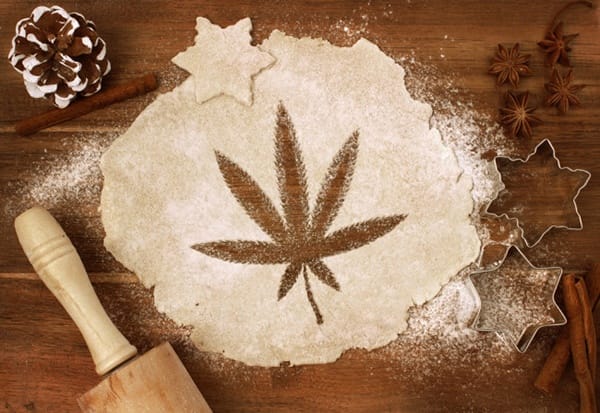
If you’ve been hip to the Cannabis scene for a few years, then you’re probably familiar with Cannabis-infused butter. For decades the condiment was a practical staple in pot-head pantries and was the standard for making all sorts of delectable stoner treats – from pancakes, to cupcakes, to even regular cakes.
The market is constantly evolving, and with dairy allergies continuing to rise, butter has become increasingly scarce in professionally-marketed Cannabis products. So what’s taken the place of butter in all these cakes? Coconut Oil. An estimated 2% of the population is now allergic to dairy. That’s significant compared to coconut – which has so few reported allergic responses that no organization has statistics on them.
Today’s article will look at why this product has become so popular and show you how to make your own Cannabis-infused coconut oil.
“High” Fat
A growing allergy concern isn’t the only reason this so-called superfood has become increasingly popular for reefer enthusiasts and health-nuts alike. Coconut oil has one the highest saturated fat contents of any food medium. The Cannabinoids – the active ingredients in your herb – attach themselves to these “good fats.” Coconut oil is about 87% saturated fat – compared to just 51% for butter, or 20% for olive oil. That means coconut oil can absorb more than four times the amount of active compounds than olive oil can, giving far greater potency to foods made with the tropical nut. The very same product used as a butter replacement in recipes is also excellent for a wide range of topical products like salve or lip balm – which is especially helpful for arthritis sufferers and those with sensitive lungs. With a few modifications, the infused coconut oil can even be used for e-cigarette juice. With such a staggering array of complementary uses, Cannabis and coconut seem destined for one another.
Super-foods to the Rescue
Despite negative press that proliferates in the United States, coconut oil itself boasts a staggeringly long list of health benefits. The U.S. doesn’t own any coconut orchards and consequently makes very little money on the product, which explains its lack of advertisement (it’s likewise almost impossible to avoid soy oils and derivatives in this country today). However, just a quick scratch under the surface will reveal over 1,500 studies attesting to coconut oil’s many benefits.
Good Fats
One of the biggest reasons coconut has had such hype in health food circles is something called MCTs, or mono-chain triglycerides. MCTs are the type of fat that coconuts produce. Most of the fat in the human diet is made up of LCTs, or long-chain triglycerides. The human body takes 26 steps to process these more common LCTs and the end result tends to be stored fat and extra body weight. The fat in coconut oil, on the other hand, takes an astonishingly short three steps to be processed and utilized. Consequently, it provides a more immediate source of energy. Coconut oil actually promotes fat burning and has been shown to increase calories burned by up to 5%. MCTs go straight to the liver to aid a number of functions including the production of ketones – a biological compound that has potent effects on the brain, and is now being studied as a potential remedy for Alzheimer’s and Epilepsy. Consuming coconut regularly also promotes good HDL cholesterol levels, linked to reduced heart disease. Whew.
Making Your Own Cannabis-infused Coconut Oil
There are a number of ways to go about making your own infused coconut oil, but the process is basically the same as that for making infused butter (which some readers might already be familiar with). One major benefit of using coconut oil instead of butter is that the end result can be used in a staggering array of applications: it will serve as a stand-alone medicine internally and externally, can easily be added to foods, and can even function as a base for other topicals like salve or lip balm.
The recipe is simple enough, and one of my favorite aspects about infused oil is that it’s the perfect opportunity to use parts of the cannabis plant that are often discarded. I used to ask my friends to save their stems and leaves (roots have a high amount of medicinal value, too) to use in mine.
The more intoxicating chemical compounds in the plant tend to be in the female flowers, the part of the plant often smoked. So if you’re looking to get baked and not just tend to arthritis or other medical problems, then you’ll want a lot of flower in the mix. Some suggest as high as a one-to-one ratio of flower to oil. So if you’re making one cup of coconut oil, use one cup of ground herb. If you’re double boiling with water in your mix then you can arguably add more plant matter, but remember that there is a limit to how much your oil can absorb. At some point, you’ll be wasting herb if you throw too much in.
Decarboxylation is the term used for activating the THC in your Cannabis. This can be one of the scariest and stupidest-sounding things to do with your pot, but fortunately this method takes the anxiety out of the process. Decarboxyllation is the reason that you didn’t get high that time you ate a bunch of raw reefer nuggets (everyone does that, right?) – the THC isn’t in an intoxicating form until it’s heated to about 220 degrees over a 30-45 minute period. A lot of recipes will tell you to spread your ground herb onto a baking sheet and bake it!
Not this guy! Fortunately, all you need for my method is your herb, your oil and a double boiler – OR a crock pot, OR just a pan with some water in it!
All you need to do it combine the ingredients and let them cook! Start with a low temperature for the first few hours: slow cooker for 4-6 hours, double-boiler for 6-8 hours, or a saucepan for 3. Stir occasionally regardless of the method. The saucepan is the most susceptible to burning, so it requires the most stirring. Water should keep your plant from burning but be sure not to exceed 245 degrees. OPTIONAL: Use a cheesecloth or strainer to filter out the plant matter.
That’s it! Now you’ve got a potent edible or topical useful in a number of applications. My favorite is Homemade Chocolate Ice Cream Shell – just (carefully) melt your favorite chocolate on the lowest setting with the coconut oil, use a ratio of about 3 or 4 times the chocolate. Stir frequently and let it cool. Throw it on top of your favorite frozen desert for a transcendent treat!
